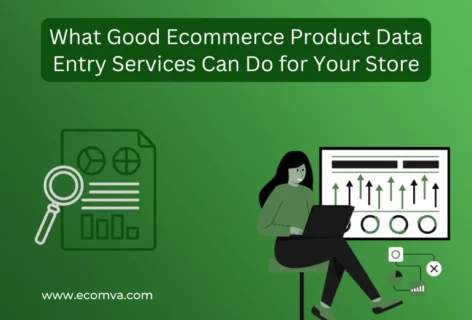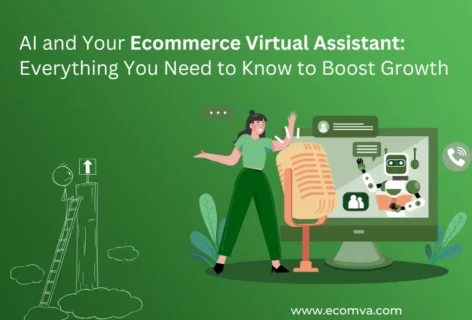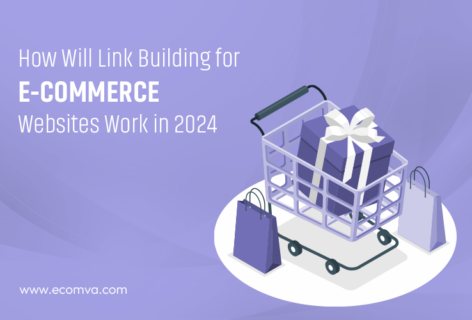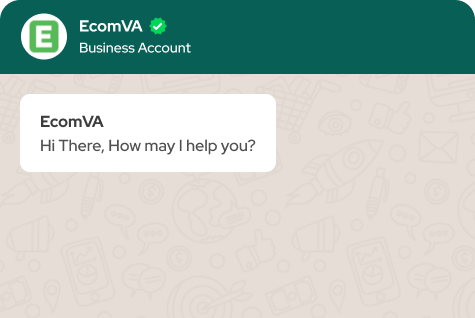Best Email Automation Service That Converts 3x Better
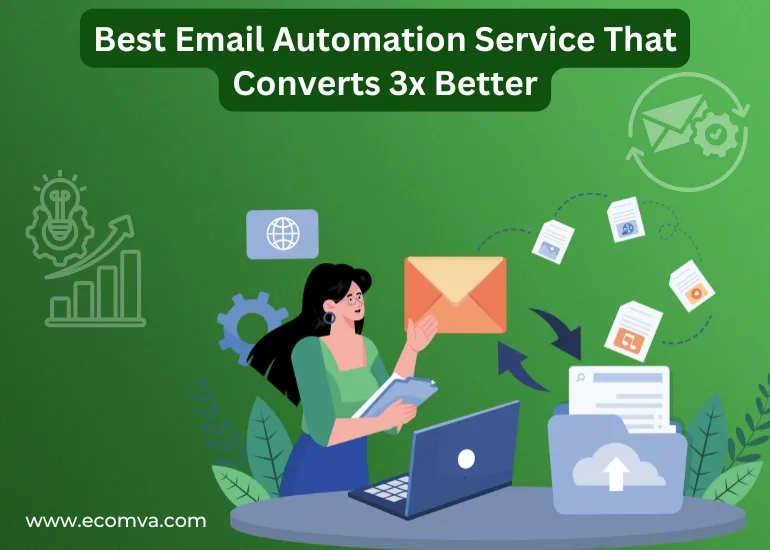
Getting someone to open an email is hard. Getting them to click is harder. But the hardest part? Getting them to buy.
Most online stores send emails every week. Some use welcome flows, some set up abandoned cart reminders, but very few know which emails actually lead to sales. Most don’t track revenue from flows. They don’t check how their open rates compare to their click rates. They keep sending, but the results stay flat.
If you want better numbers, the setup has to change. You need the right structure, the right timing, and content that speaks to the customer at each step.
The best email automation service focuses on this. They help you build a system that works quietly in the background while bringing in repeat sales. From building automated email campaigns to creating effective email funnel automation, the right setup handles everything while you sleep.
This blog breaks down how that system is built. You’ll see what’s missing in most setups, what makes automation convert better, and why handling everything yourself usually leads to slow progress. You’ll also get a real workflow used by experienced teams to build and run email automation properly.
Let’s start with where things usually go wrong.
Why Most Email Automation Fails to Convert
Here are common mistakes causing weak conversion:
- Missing essential flows
Many brands only use a welcome email or abandoned cart. They skip post‑purchase follow‑ups, browse abandonment triggers, win‑back sequences.
- Lack of segmentation
Sending the same message to all subscribers. No differences based on purchase history, browsing behavior, or customer value.
- Generic content and weak subject lines
Emails that don’t resonate with what the recipient did or wants. Subject lines with no clarity or value.
- Poor design & mobile issues
Templates that render badly on phones. Slow‑loading images. The buttons are too small. Long paragraphs.
- No testing or metrics focus
Failing to A/B test subject lines, send times, or layout. Not watching conversion per flow, revenue attribution, or engagement decline.
Common signs your email automation isn’t converting:
| Problem | What it Looks Like | Why it Happens |
|---|---|---|
| Low open rates | 15% or lower | Bad subject lines, poor targeting |
| Low click-through | <1% | Email content not matched to product timing |
| Poor revenue attribution | Can’t see which flows bring sales | No UTM tracking or platform setup |
Instead of working in the background, these flows just sit there.
Moreover, many marketers say their biggest challenge with email automation is poor performance insights. That means even when emails go out, they don’t know how much they earn.
Without knowing what works, it’s impossible to scale your automated email campaigns effectively.
High-Converting Email Automation (From the Customer’s POV)
The brands getting great results treat email automation like a system. Each email is part of a bigger journey.
Here’s what their setup usually includes:
- Proper tagging (so contacts are sorted by where they are in the journey)
- Email flows for every lifecycle stage, not just welcome or abandoned cart
- Split testing subject lines, designs, and timings
- Attribution tracking (so you know what flow earned what)
- Content matched to behavior (like sending sizing help before a product return window)
Common Email Flows That Work
| Flow | Purpose | Conversion Driver |
|---|---|---|
| Welcome Series | Turn new subscribers into buyers | Product benefit + strong intro offer |
| Cart Abandonment | Bring users back to checkout | Time-sensitive reminder + social proof |
| Browse Abandonment | Re-engage casual browsers | Product highlight + urgency |
| Post-purchase | Upsell or cross-sell | Thank-you + next best product suggestion |
| Win-back | Re-activate dormant customers | Time-limited comeback offer |
Email Components That Drive Conversion
- Clear and specific subject line. Something the reader understands quickly.
- Supporting preheader text. Adds context or urgency.
- Personalization by behavior or purchase. (e.g., “You left these items in your cart…” or “Based on your previous order…”)
- One strong CTA per email. Don’t overload with choices.
- Templates built for mobile + desktop. Buttons are easy to tap. Images optimized for speed.
- Proof and social signals: reviews, ratings, and photos from customers.
- Relevant timing: e.g., first abandoned cart email within a few hours, not days. Welcome sequence spaced properly.
- A/B tests — subject lines, send times, layouts — used regularly.
The best email automation service ensures all of the above work together through smart email workflow automation.
Why Doing It Yourself Isn’t the Best Use of Time
Running email automation yourself seems cheaper. But it often costs more in the long term. Here’s why:
- You must master multiple skills: copywriting, design, strategy, and data tracking. Each takes time. Imperfection in one weakens the whole chain.
- Mistakes happen: wrong triggers, broken links, poor rendering, mis‑tagged customers. This damages trust.
- Scaling becomes hard: more products, more customers, more flows. Without dedicated help, quality slips.
- Slow feedback loops: You set up, but analyzing results, testing, and fixing take hours you’d rather spend elsewhere.
A lean DIY approach often means slow gains. Meanwhile, competitors using stronger setups will pull ahead. Even a virtual dropshipping assistant will struggle to maintain that volume and quality alone.
How Hiring the Right Help Can Multiply Conversions
Expert help moves you from trial‑and‑error to consistent performance. These are what capable partners do differently.
- Build missing automation flows. All key flows are created and managed.
- Segment well. High‑value customers, frequent browsers, inactive users. Each gets messages suited to them.
- Copywriting & design done well. Clear visuals, brand voice, professional templates.
- Regular testing and optimization. Not just waiting for results, but tweaking subject lines, content, and sending schedules.
- Detailed metrics. Tracking revenue per flow, attribution, list health, and engagement decay.
How a Real Email Automation Setup is Executed by Experts
Below is a detailed workflow used by professionals. You can adopt this workflow step‑by‑step.
| Step | Action | Deliverable / Responsibility |
|---|---|---|
| 1. Audit & Plan | Review existing flows, list health metrics, identify gaps and goals. | Audit report: what’s missing; goals for open, click, conversion rates. |
| 2. Segmentation & Data Setup | Clean subscriber list, tag based on behavior, purchase history, inactivity, integrate store / website data. | Clear, segmented lists; tags and triggers ready. |
| 3. Flow Mapping | Decide which flows to build or improve: welcome, abandoned cart, browse abandonment, post-purchase, win-back. Set timing, triggers, frequency. | Flow blueprint document; map showing trigger points. |
| 4. Template & Copy Design | Build email templates, write subject lines, body copy, and calls to action. Ensure mobile + desktop compatibility. | Templates, content drafts, visuals. |
| 5. Tool Configuration & Tool Choice | Use tools such as Klaviyo Email Marketing Automation or Dot Digital Ecommerce Automation to implement the flows; set up data connections; test triggers. | Automated flows ready; integration connected; test sends. |
| 6. Quality Assurance (QA) | Test email rendering on multiple devices, check broken links, make sure website links work and images load. | QA report; issues fixed. |
| 7. Launch & Monitor | Activate flows, observe first sends, track opens, clicks, conversions; watch for errors. | Initial performance metrics; adjustment list. |
| 8. A/B Testing & Optimization | Test different subject lines, sending times, email content, prune inactive subscribers, and refine segments. | Ongoing improvements; better metrics per flow. |
| 9. Maintain & Scale | Add new flows (VIP, loyalty segments), refresh template & copy, ensure list hygiene, and monitor deliverability and IP reputation. | More flows; fresh content; stable performance over time. |
This workflow helps the best email automation service deliver better.
Final Wrap-Up: The Real Reason Some Brands Convert 3× Better
Better conversion doesn’t come from sending more emails. It comes from sending the right ones, at the right time, to the right person.
Brands that win with email have one thing in common: they build their automation properly.
- Every flow has a purpose.
- Every email is designed to convert.
- Every click and purchase is tracked.
If you’re serious about getting more sales from your list, stop relying on default templates and untested flows.
Invest in a system built to convert.
Find the best email automation service for your store. The results will speak for themselves.
FAQs
1. What’s the best platform to use for email automation if I’m just starting out?
If you’re a beginner, platforms like Klaviyo, MailerLite, or Omnisend are great places to start. They have pre-built automation templates, drag-and-drop editors, and solid reporting. Look for a platform that offers native integration with your store or CRM to avoid setup headaches.
2. How do I know if my emails are going to spam?
You can run your emails through spam-check tools like Mail-Tester or check inbox placement reports from your email platform. Watch for red flags like low open rates, high bounce rates, or flagged subject lines. Also, always use verified sending domains and avoid spammy phrases like “Act Now!” or “100% Free.”
3. Is it okay to reuse content from my email flows in my newsletters?
Yes, as long as the timing and context match. You can repurpose high-performing content from flows (like product FAQs or testimonials) into your campaigns. Just make sure it feels relevant to the audience you’re sending it to. Don’t send a post-purchase email to people who haven’t bought yet.
4. How often should I review or update my automation flows?
At least once every 90 days. Even evergreen flows like welcome or cart abandonment can underperform over time. Keep an eye on drop-offs, update visuals, refresh your copy, and test new subject lines. Small changes can lead to better conversions without rebuilding the entire flow.


